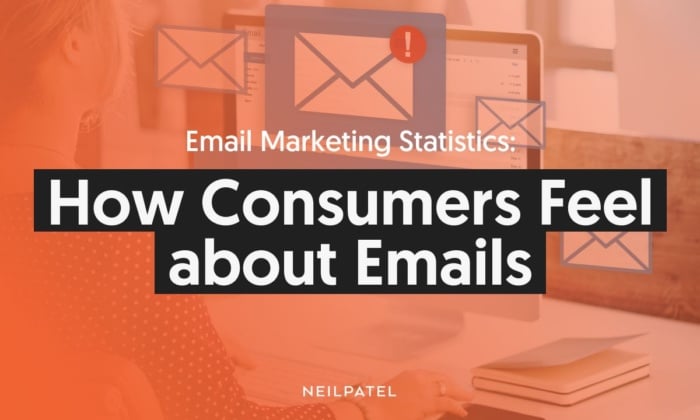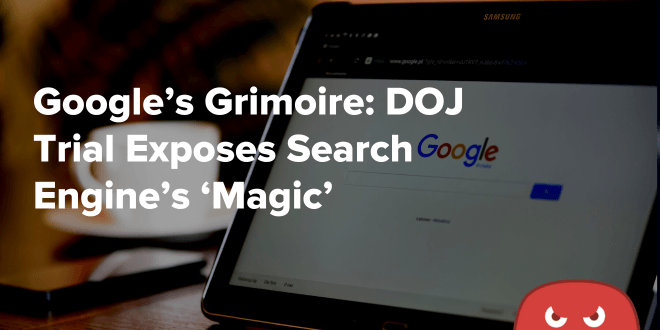
Google is currently in the throes of its ongoing court battle with the U.S. Department of Justice, which kicked off on September 12th, 2023.
Why is the search engine behemoth in *** water?
The DOJ claims Google engaged in ******* business dealings to secure its search engine as the default on many popular devices and web browsers.
Giant companies like Apple, Mozilla, and Samsung all have exclusive deals with Google – and the company holds a staggering 90% of the market share.
According to the DOJ, Google has an unfair stranglehold on the market due to these deals, making it next to impossible for other search engine providers to compete.
Google’s defense is that they provide a superior product to their competitors, which is why they’re so dominant.
Regardless of the outcome of this trial, the DOJ recently released internal Google presentations, emails, and documents that provide never-before-seen insights into their ranking process.
This is a goldmine for SEOs, as we now have access to some insider secrets that we were never meant to see.
If you weren’t aware, Google is famously tight-lipped about how their search algorithm works; as if everyone knew, it would become very easy to manipulate the search rankings, which Google doesn’t want.
To briefly quote one of the leaked documents, “Keep talk about how search works to a minimum. Everything we leak will get used against us by SEOs, patent trolls, competitors, etc.”
Stick around to learn the things Google doesn’t want you to know.
The Tech Trial of the Century
The Google trial is the government’s first major monopoly case in decades, and it’s the first case of its kind to affect the modern internet.
The last time the government took an antitrust case to trial, it was against Microsoft in 1998, and the circumstances were quite similar.
Just like Google, Microsoft was accused of using its massive market power to derail competitors.
While the 1998 trial was a major media sensation that consumed journalists for months, the Google trial isn’t generating as much suspense.
However, that doesn’t mean that the results of this trial won’t potentially change the search landscape as we know it forever.
Should the US government win the case, it could mark an end to Google being the default search engine on most devices, which would give other engines like Yahoo and Microsoft a chance to realistically compete.
For now, the most breaking development for SEOs is the internal Google documents that the DOJ released as trial exhibits.
They’re a collection of previously unreleased PowerPoint slides, emails, and other documents related to Google’s ranking process.
Here’s a peek at the juiciest tidbits that you can use in your SEO strategy.
You Can’t Handle the Truth! Google’s Leaked Documents
Ever since Google made PageRank’s data private, digital marketers everywhere have been working around the clock to figure out how it works.
That’s why we have third-party metrics like Moz’s Domain Authority, as we have no public data from Google to go on.
There’s also fierce debate over which ranking factors matter most to Google, such as links, quality content, and page speed.
While the released documents don’t provide all the answers by any means, they do shed light on areas that were previously shrouded in darkness.
‘Life of a click’ PowerPoint presentation
In a PowerPoint slide from 2017 entitled ‘Life of a Click,’ we get to see Google’s 3 Pillars of Ranking:
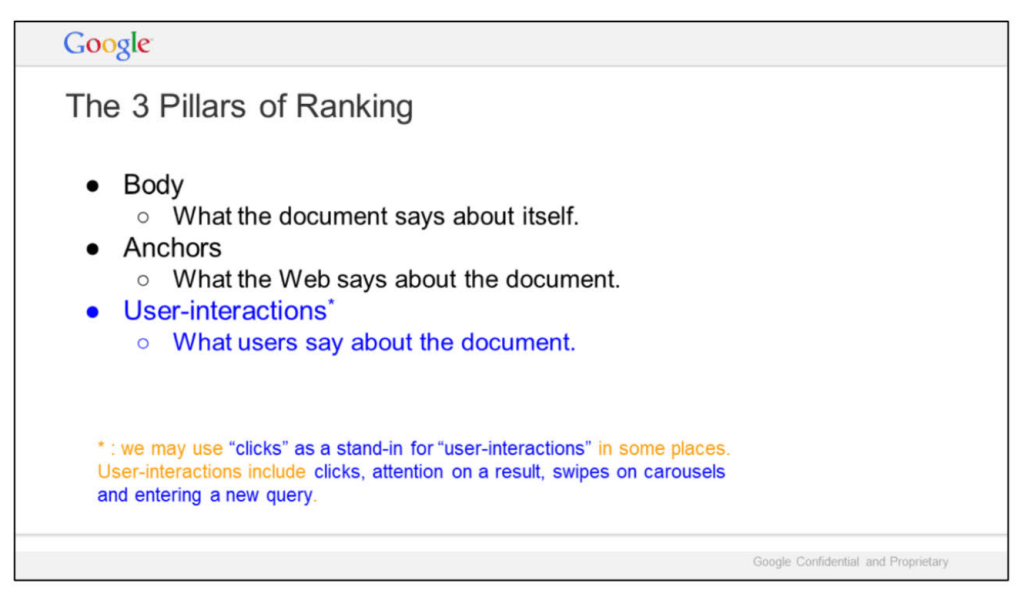
In it, we learn that the three pillars are content, links, and user interactions.
The body, or content, is ‘what the document says about itself,’ according to Google.
Anchors are what the web says about a document, which refers to trustworthy backlinks.
The last pillar is user interactions, or what ‘users say about the document.’ By that, they mean they look at things like clicks, scrolls, and hovers to determine how users view each search result.
Most interesting is the caveat at the bottom, which says they may use clicks as a stand-in for user interactions in some places.
This is a bit concerning, as clicks tend to be a very noisy and complicated ranking signal. However, Google claims they only use clicks as a substitution for experiments, training, and personalization.
Google doesn’t understand documents
Another PowerPoint slide from 2016 confesses that Google doesn’t directly understand web pages. Instead, they look to reactions from users to gain an understanding of web content. 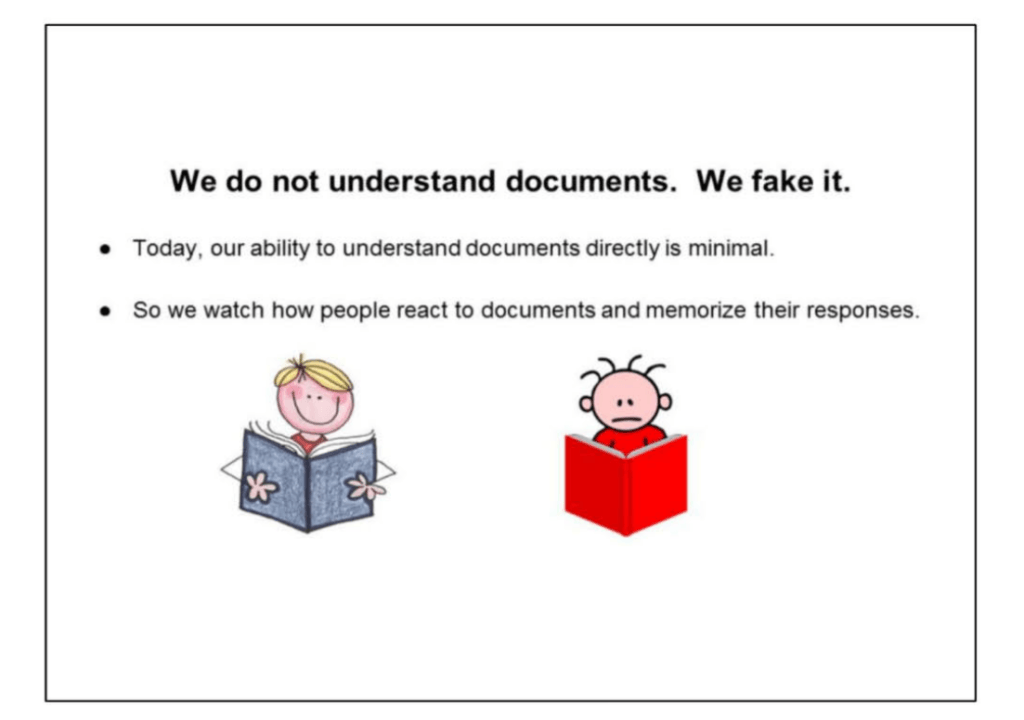
Grossly simplified, Google doesn’t look at documents, they look at people’s reactions. So if a search result gets a positive result, Google assumes that it’s a good piece of content.
Strangely enough, this is also the source of Google’s ‘magic.’
What do we mean by that?
Google engages in a hidden ‘dialogue’ of sorts with its users to learn more about their preferences and the type of content they want to see.
Let’s look at a few more documents to better understand this concept.
Oh, oh, oh, it’s magic
Google works by creating a compounding effect from the data it generates from its users.
That means every user benefits from the actions of past users, and future users will benefit from their actions.
Here are a few slides from the leaked PowerPoint ‘Google is Magical’ to demonstrate what we mean.
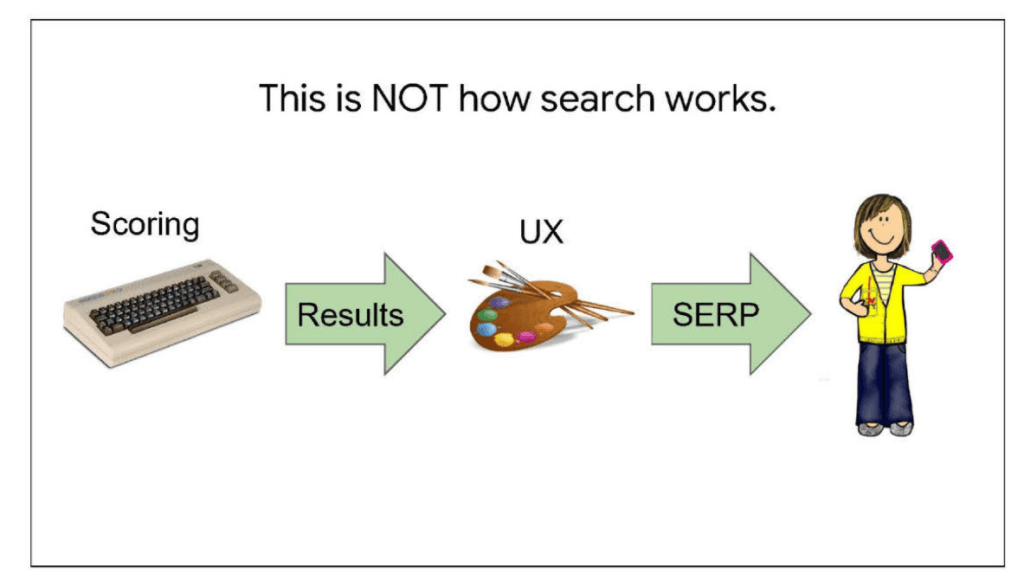
This simplistic slide shows how most people think search engines work, but it’s missing the magic.
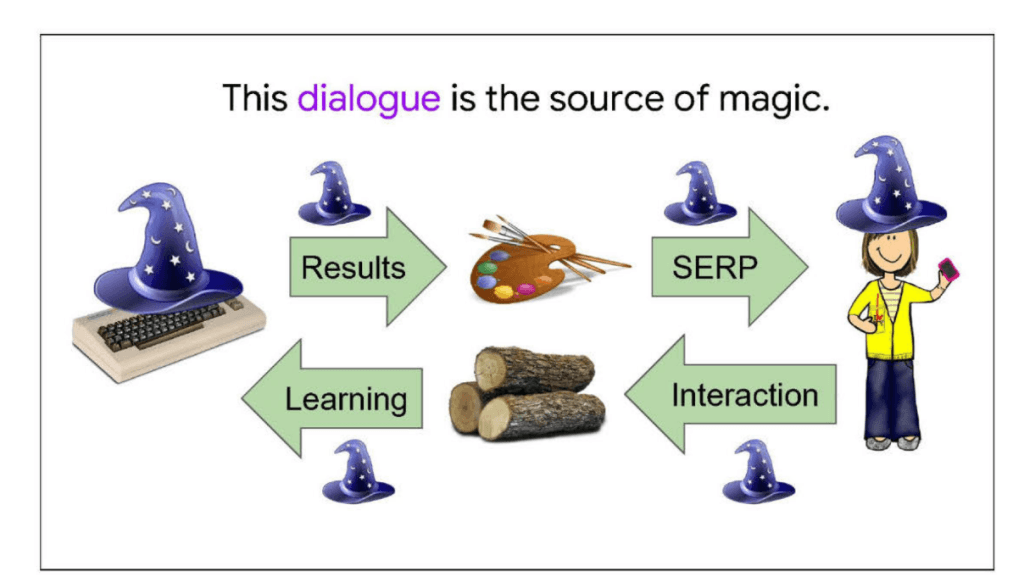
This slide reveals the secret, which is another flow of information in the opposite direction. This represents how Google learns from its users with every search they make.
Deciphering Google’s hidden language
Since Google views search as a two-way dialogue, there’s a ‘conversation’ of sorts happening on every SERP.
On each results page, Google is implicitly asking the user a question, and they also provide the tools for the user to answer.
For example, the question posed by a basic SERP is, “Which search result is best?” The user then provides an answer by clicking on the result they feel best matches their search intent.
The same is true for image results, carousels, and every other feature found on Google Search.
So, no matter what you’re doing on Google, you’re always engaging in this type of dialogue.
Using This Knowledge to Your Advantage
The more we understand about Google’s ranking process, the easier it is to align your SEO efforts accordingly.
These leaked documents reinforced some things we knew and opened our eyes to others.
We’re still in the middle of the court battle, as it’s set to go on until just before Christmas, so stay tuned to our blog for the latest updates.
If you want to implement a winning SEO strategy at your business, look into HOTH X, our five-star managed SEO service.
